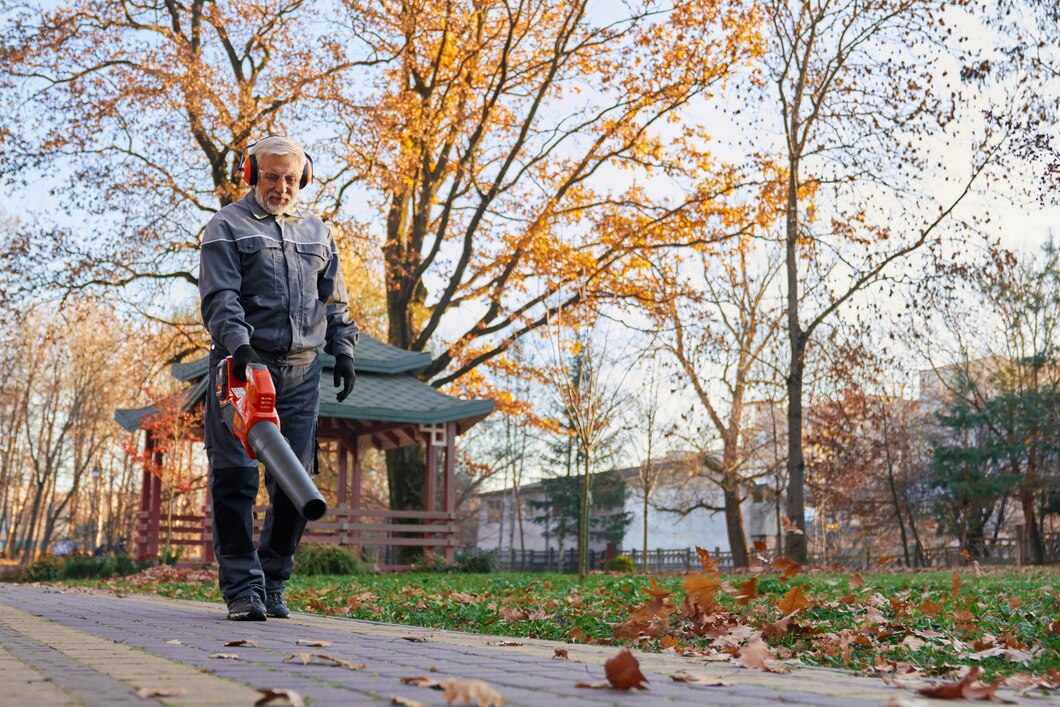If you’ve been diagnosed with Eustachian Tube Dysfunction (ETD), navigating everyday tasks often requires a little extra thought. From deciding whether to take a flight to determining if you should use a loud appliance, ETD can turn simple activities into calculated choices. One common question people ask is whether it’s safe to use a leaf blower if you have ETD. Let’s dig into the details of ETD, how leaf blowers might affect this condition, and whether there are safer alternatives.
What Is Eustachian Tube Dysfunction (ETD)?
To understand how leaf blowers might impact your ears, let’s first explore the basics of Eustachian Tube Dysfunction. The Eustachian tubes are small, yet crucial, canals that run between your middle ear and the back of your throat. These tubes help regulate pressure in your ears, drain fluids, and keep everything in balance.
However, when the Eustachian tubes don’t function properly—whether due to blockages, inflammation, or other factors—you may experience a range of uncomfortable symptoms. ETD isn’t a one-size-fits-all condition; its severity and symptoms can vary widely.
Symptoms of ETD
If you’ve dealt with ETD, you’re likely familiar with its hallmark symptoms. These include:
- Persistent or fluctuating ear pressure
- Muffled hearing that can feel like being underwater
- Pain or discomfort in one or both ears
- A sensation of fullness in the ear
- Popping or crackling sounds, especially when yawning or swallowing
Each of these symptoms stems from the inability of the Eustachian tubes to properly equalize air pressure in your ears.
What Causes ETD?
There are many potential triggers for ETD, including:
- Allergies – Seasonal allergies can cause swelling in the nasal passages, which directly impacts the Eustachian tubes.
- Upper Respiratory Infections – Colds, sinus infections, and even mild congestion can disrupt tube function.
- Loud Noises – Exposure to high-decibel sounds, especially over time, can make ear-related conditions worse.
- Rapid Air Pressure Changes – Activities like flying or diving often highlight the Eustachian tubes’ inability to adjust quickly.
Given the nature of ETD, it’s no surprise that high-decibel tools like leaf blowers can raise concerns.
The Mechanics of Leaf Blowers and Their Impact on ETD
Leaf blowers are practical tools, saving hours of manual labor by quickly clearing debris. But their features—high decibel levels, intense air movement, and vibrations—might spell trouble for people with ETD.
Noise Levels and Hearing Stress
One of the most obvious risks of using a leaf blower is its noise output. Most leaf blowers operate at sound levels ranging from 85 to 110 decibels. For context, prolonged exposure to sounds above 85 dB can damage hearing. If your Eustachian tubes are already inflamed or blocked, the intense noise may exacerbate discomfort and worsen symptoms.
It’s important to remember that noise doesn’t just affect your ears passively. Loud environments force your auditory system to work harder to process sound, putting additional strain on already-compromised Eustachian tubes.
Pressure and Vibration Effects
Leaf blowers also generate significant vibrations and air movement. While these seem unrelated to ear health, they can create subtle, localized pressure changes that might affect those with ETD. For example, holding a vibrating machine near your torso could transmit small vibrations to your inner ear, potentially disrupting balance or increasing a sense of pressure.
Environmental Factors
Using a leaf blower outdoors might expose you to allergens, dust, and other particles. If your ETD is triggered by allergies or sinus issues, breathing in airborne debris could worsen your condition indirectly. The combination of noise, vibrations, and allergens can make leaf-blowing a less-than-ideal activity for individuals with ETD.
How to Safely Use a Leaf Blower with ETD
If you decide that using a leaf blower is necessary, there are ways to reduce the risks to your ears and overall health. While these precautions won’t eliminate the potential for discomfort, they can help minimize its impact.
1. Protect Your Hearing
Invest in high-quality ear protection, such as earplugs or over-the-ear noise-canceling headphones. These devices can block out most of the high-decibel noise produced by leaf blowers, reducing the strain on your ears.
2. Limit Exposure
Instead of using the blower for extended periods, break the task into shorter intervals. This approach gives your ears and body time to recover. It’s also a good idea to work in cooler, less windy conditions to minimize exposure to allergens.
3. Opt for a Quieter Tool
Consider using a battery-powered or electric leaf blower. These models are significantly quieter than traditional gas-powered machines and produce less vibration.
4. Stand Back
Maintain a safe distance between yourself and the air nozzle. Direct contact with the high-speed air jet can increase pressure fluctuations around your face and ears, potentially aggravating ETD symptoms.
Are There Better Alternatives?
For those with moderate to severe ETD, avoiding leaf blowers altogether might be the best course of action. Thankfully, there are several alternatives that can get the job done without putting your ears at risk:
- Manual Rakes – Though more labor-intensive, raking eliminates the risks of loud noise and pressure changes.
- Lawn Sweepers – These machines are quieter and gentler than leaf blowers, making them a suitable alternative for people with ETD.
- Hire Professional Services – If yard maintenance feels overwhelming, enlisting professional help can save your ears and your energy.
Final Thoughts
So, can you use a leaf blower if you have Eustachian Tube Dysfunction? The answer largely depends on the severity of your symptoms and how well you manage risks. While it’s not inherently dangerous, the combination of noise, vibrations, and environmental factors might worsen your condition. If you choose to proceed, take all necessary precautions to protect your hearing and comfort.
Remember, your health should always come first. If operating a leaf blower feels like too much of a gamble, explore quieter, manual alternatives that keep your ears—and peace of mind—safe.



